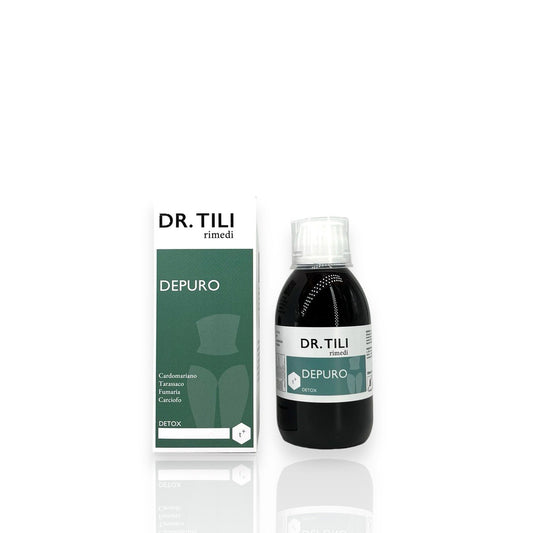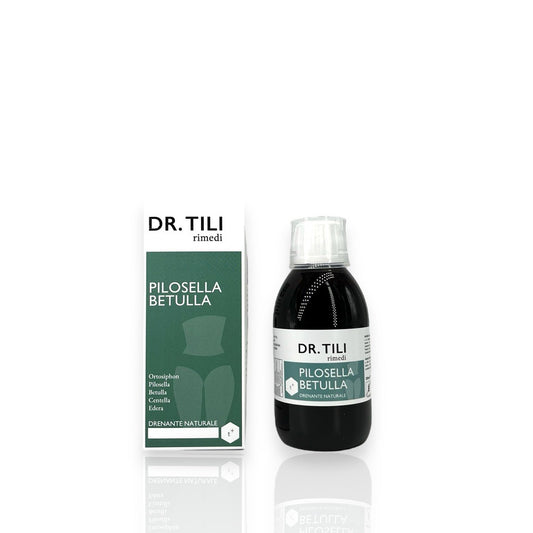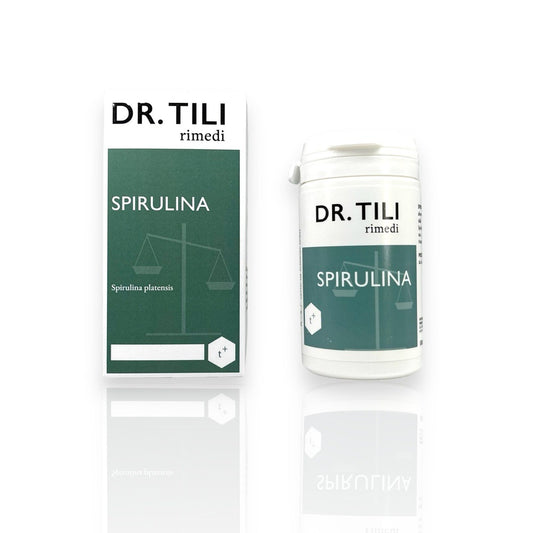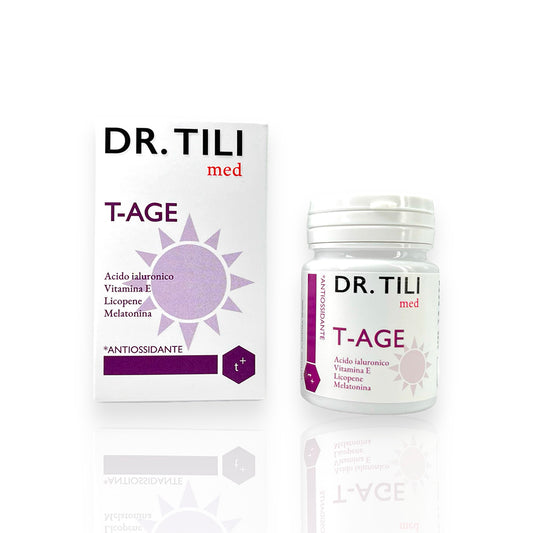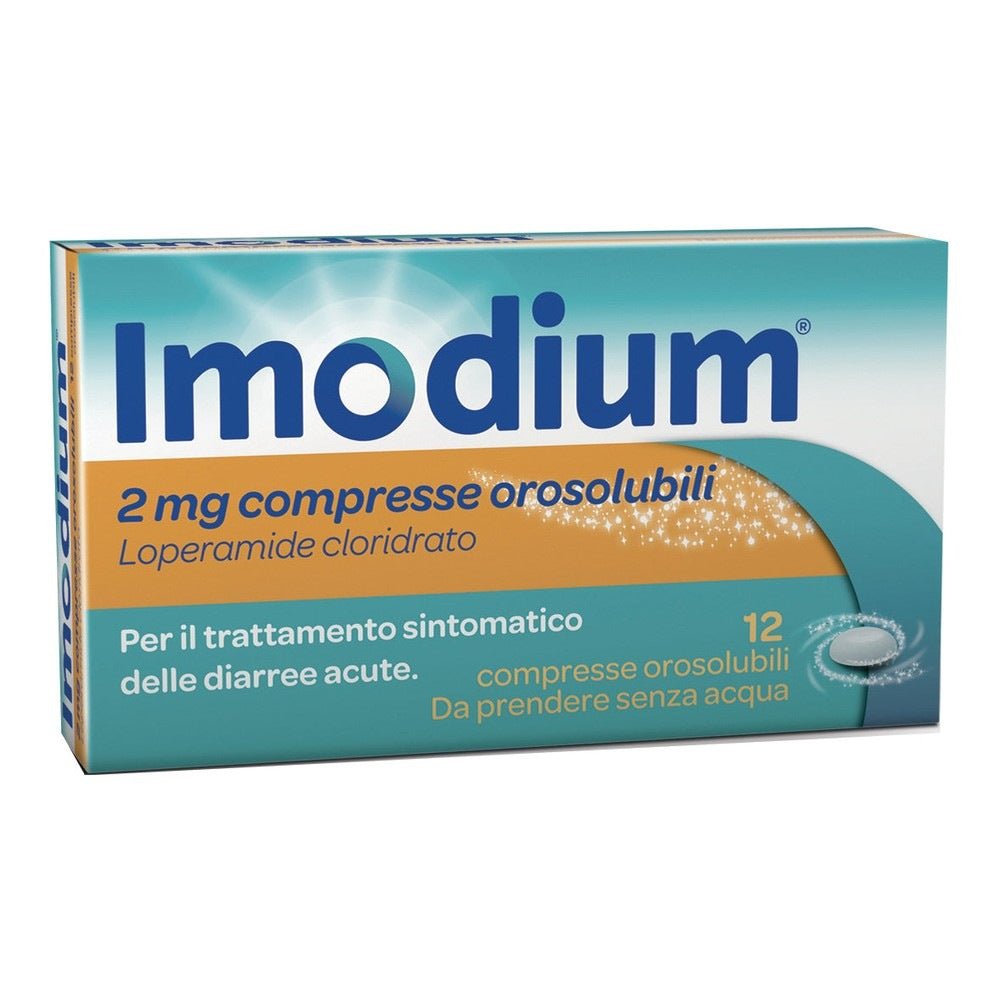JOHNSON & JOHNSON SpA
Imodium 2mg 12 orodispersible tablets
Imodium 2mg 12 orodispersible tablets

Pickup available at Farmacia Tili
Usually ready in 24 hours
PRODUCT NET WEIGHT
PRODUCT NET WEIGHT
EAN
EAN
023673092
MINSAN
MINSAN
023673092
Imodium 2mg is an antidiarrheal drug based on loperamide hydrochloride , indicated for the treatment of acute and chronic diarrhea . It acts rapidly by reducing intestinal motility, promoting the restoration of digestive balance and limiting the loss of fluids and mineral salts.
The orosoluble tablet formulation allows for intake without water , dissolving quickly on the tongue for a practical and immediate action. Ideal for those who need effective treatment against diarrhea at any time. The 12-tablet format is perfect for occasional use or to always carry with you.
ACTIVE INGREDIENTS
Active ingredients contained in Imodium 2mg 12 orodispersible tablets - What is the active ingredient in Imodium 2mg 12 orodispersible tablets?
One hard capsule contains: Active substance: Loperamide hydrochloride 2 mg. One orodispersible tablet contains: Active substance: Loperamide hydrochloride 2 mg. One soft capsule contains: Active substance: Loperamide hydrochloride 2 mg. Excipients with known effect: IMODIUM 2 mg hard capsules: lactose 127 mg. IMODIUM 2 mg orodispersible tablets: each tablet contains 750 micrograms of aspartame; the mint flavour contains traces of sulphites. IMODIUM 2 mg soft capsules: each soft capsule contains 115.31 mg of propylene glycol. For the full list of excipients, see section 6.1. For the full list of excipients, see section 6.1.
EXCIPIENTS
Composition of Imodium 2mg 12 orodispersible tablets - What does Imodium 2mg 12 orodispersible tablets contain?
IMODIUM 2 mg hard capsules : lactose, maize starch, talc, magnesium stearate. A green-grey hard capsule consists of: erythrosine (E 127); indigo carmine (E 132); yellow iron oxide (E 172); black iron oxide (E 172); titanium dioxide and gelatin. IMODIUM 2 mg orodispersible tablets : gelatin, mannitol, aspartame, mint flavour, sodium bicarbonate. IMODIUM 2 mg soft capsules : propylene glycol monocaprylate, propylene glycol, distilled water. A capsule consists of: gelatin, glycerol 99%, propylene glycol, FD&C blue no. 1.
DIRECTIONS
Therapeutic indications Imodium 2mg 12 orosoluble tablets - Why is Imodium 2mg 12 orosoluble tablets used? What is it used for?
IMODIUM is indicated for the symptomatic treatment of acute diarrhoea.
CONTRAINDICATIONS SIDE EFFECTS
Contraindications Imodium 2mg 12 orodispersible tablets - When should Imodium 2mg 12 orodispersible tablets not be used?
Hypersensitivity to the active substance or to any of the excipients listed in section 6.1; Children under 6 years of age; Pregnancy and breast-feeding (see section 4.6 “Pregnancy and breast-feeding”). IMODIUM should not be used as primary therapy: • in acute dysentery characterised by blood in the stool and high fever; • in patients with acute ulcerative colitis or pseudomembranous colitis due to the use of broad-spectrum antibiotics; • in patients with bacterial enterocolitis caused by invasive organisms including Salmonella, Shigella and Campylobacter. In general, the use of loperamide HCl is contraindicated in all cases where inhibition of peristalsis is to be initiated because of the possible risk of significant consequences such as ileus, megacolon and toxic megacolon.
DOSAGE
Quantity and method of taking Imodium 2mg 12 orodispersible tablets - How to take Imodium 2mg 12 orodispersible tablets?
Dosage Adults The initial dose is 2 hard capsules or 2 soft capsules or 2 orodispersible tablets (4 mg). Continue treatment with 1 capsule or 1 tablet (2 mg), after each subsequent evacuation of loose (soft) stools. The maximum daily dose is 8 capsules or tablets per day (16 mg). Special populations Children aged 6 to 17 years (see section 4.3) The initial dose is 1 hard capsule or 1 soft capsule or 1 orodispersible tablet (2 mg). Continue treatment with 1 capsule or 1 tablet (2 mg), after each subsequent evacuation of loose (soft) stools. The maximum daily dose in children should be established according to body weight (3 capsules or tablets/20 kg), but must not exceed the maximum of 8 capsules or tablets per day (16 mg). There are limited data available on the use of loperamide HCl in children under 12 years of age (see section 4.8 “Undesirable effects”). Elderly No dose adjustment is necessary in the elderly. Impaired renal function No dose adjustment is necessary in patients with impaired renal function. Impaired liver function Although no data are available in patients with impaired liver function, loperamide HCl should be used with caution in these patients due to reduced first-pass metabolism (see section 4.4 “Special warnings and precautions for use”). Method of administration IMODIUM 2 mg hard capsules/2 mg soft capsules: take by mouth with a little water. IMODIUM 2 mg orodispersible tablets: leave the tablet to dissolve on the tongue for a few seconds; the tablet will dissolve rapidly in saliva. The use of water is not required. Caution : Do not use for more than 2 days. In any case, discontinue treatment when stools return to normal, or if you have not had bowel movements for 12 hours, or if constipation occurs. In acute diarrhea, loperamide HCl is generally able to stop the symptoms within 48 hours. If this period elapses without appreciable results, discontinue treatment and consult your doctor.
CONSERVATION
Storage Imodium 2mg 12 orodispersible tablets - How to store Imodium 2mg 12 orodispersible tablets?
Store the medicine at a temperature not exceeding 25°C.
WARNINGS
Warnings Imodium 2mg 12 orodispersible tablets - About Imodium 2mg 12 orodispersible tablets it is important to know that:
Treatment of diarrhea with loperamide HCl is only symptomatic. Therefore, where possible, it is also advisable to address the causes of the disorder. In acute diarrhea, loperamide HCl is usually able to arrest the symptoms within 48 hours; if this period elapses without appreciable results, treatment should be interrupted and the patient should be advised to consult a doctor. Patients with diarrhea, especially children, may experience significant fluid and electrolyte loss. In such cases, appropriate fluid and electrolyte replacement may be very important. Although no pharmacokinetic data are available in patients with hepatic dysfunction, loperamide HCl should be used with caution in these patients due to extensive first-pass metabolism. The drug should be used with caution in patients with hepatic insufficiency as it may lead to relative overdose with CNS toxicity. AIDS patients treated with loperamide HCl for diarrhea should discontinue therapy at the first signs of abdominal distension. In these patients with infectious colitis of bacterial or viral origin, treated with loperamide HCl, isolated cases of intestinal obstruction with an increased risk of toxic megacolon have been observed. If constipation or abdominal or ileal distension occurs, treatment should be discontinued immediately. Cases of abuse and misuse of loperamide, used as an opioid substitute, in individuals with dependence on these substances have been reported (see section 4.9). Cardiac events including QT and QRS prolongation and torsade de pointes have been reported in association with overdose. Some cases have had a fatal outcome (see section 4.9). Overdose may unmask the presence of Brugada syndrome. Patients should not exceed the recommended dose and/or prolong the duration of therapy. Paediatric population In children between 6 and 12 years of age, IMODIUM should be used only under medical supervision. There are limited data available regarding the use of loperamide HCl in children under 12 years of age (see section 4.8 “Undesirable effects”). Important information about some of the excipients IMODIUM 2 mg hard capsules contain lactose . Patients with rare hereditary problems of galactose intolerance, the Lapp lactase deficiency or glucose-galactose malabsorption should not take this medicine. IMODIUM 2 mg orodispersible tablets contain : • traces of sulphites . Sulphites may rarely cause severe hypersensitivity reactions and bronchospasm; • 0.750 mg of aspartame per single dose which is equivalent to 0.011 mg/kg for a 70 kg adult and 0.038 mg/kg for a 20 kg child . Aspartame is hydrolysed in the gastrointestinal tract when taken orally. One of the major products of its hydrolysis is phenylalanine. There are no clinical or non-clinical data available to evaluate the use of aspartame in infants less than 12 weeks of age; • less than 1 mmol (23 mg) sodium per single dose. It can therefore be considered essentially sodium-free; • 0.00066 mg benzyl alcohol per single tablet. Benzyl alcohol may cause allergic reactions. It is possible that accumulation of large amounts of benzyl alcohol may cause metabolic acidosis; use with caution and only if necessary, especially in patients with hepatic or renal insufficiency; • 0.00003 mg alcohol (ethanol) in each tablet. The amount of ethanol in this medicine is equivalent to less than 0.00000075 ml of beer or 0.0000003 of wine. This medicine contains enough ethanol to produce no relevant effects. IMODIUM 2 mg soft capsules contain: • 115.31 mg propylene glycol. 115.31 mg propylene glycol per single dose, equivalent to 1.65 mg/kg for a 70 kg adult and 5.77 mg/kg for a 20 kg child; • less than 1 mmol (23 mg) sodium per single dose. It can therefore be considered essentially sodium-free.
INTERACTIONS
Interactions Imodium 2mg 12 orodispersible tablets - Which medicines or foods can modify the effect of Imodium 2mg 12 orodispersible tablets?
Non-clinical data have shown that loperamide is a substrate of P-glycoprotein. Co-administration of loperamide (single dose of 16 mg) with quinidine or ritonavir (both inhibitors of P-glycoprotein) has been shown to increase the plasma levels of loperamide by 2 to 3-fold. The clinical relevance of this pharmacokinetic interaction with P-glycoprotein inhibitors when loperamide is administered at the recommended doses (2 to a maximum of 16 mg daily) is unknown. Co-administration of loperamide (single dose of 4 mg) with itraconazole, an inhibitor of CYP3A4, and P-glycoprotein, has been shown to increase the plasma levels of loperamide by 34-fold. In the same study, gemfibrozil, an inhibitor of CYP2C8, has been shown to increase the plasma levels of loperamide by 2-fold. The combination of itraconazole and gemfibrozil showed a 4-fold increase in peak plasma levels of loperamide and a 13-fold increase in total plasma exposure. These increases were not associated with central nervous system (CNS) effects as measured by psychomotor tests (e.g. subjective dizziness and the Digit Symbol Substitution Test). Concomitant administration of loperamide (single dose of 16 mg) and ketoconazole, an inhibitor of CYP3A4, and P-glycoprotein, showed a 5-fold increase in plasma levels of loperamide. This increase was not associated with an increase in pharmacodynamic effects as measured by pupillometry. Concomitant treatment with oral desmopressin resulted in a 3-fold increase in plasma desmopressin concentrations, presumably due to slowed gastrointestinal motility. Concomitant use of CYP450 inhibitors is not recommended. Substances that accelerate gastrointestinal transit may decrease the effect of IMODIUM. Drugs with pharmacological properties similar to those of loperamide or drugs that can slow intestinal peristalsis (e.g. anticholinergics) may increase the effect of IMODIUM.
SIDE EFFECTS
Like all medicines, Imodium 2mg 12 orodispersible tablets can cause side effects - What are the side effects of Imodium 2mg 12 orodispersible tablets?
Adults and children aged ≥ 12 years Adverse reactions reported in clinical trials with loperamide HCl The safety of Loperamide HCl has been evaluated in 3076 adult subjects and children aged ≥ 12 years who participated in 31 controlled and uncontrolled clinical trials with loperamide HCl used for the treatment of diarrhoea. Of these, 26 trials were for acute diarrhoea (N=2755) and 5 for chronic diarrhoea (N=321). The most commonly reported adverse drug reactions (ADRs) (i.e. with an incidence ≥ 1%) in clinical trials with Loperamide HCl for the treatment of acute diarrhoea were: constipation (2.7%), flatulence (1.7%), headache (1.2%) and nausea (1.1%). In clinical trials for the treatment of chronic diarrhoea, the most commonly reported ADRs (i.e. ≥1% incidence) were: flatulence (2.8%), constipation (2.2%), nausea (1.2%) and dizziness (1.2%). Table 1 shows the ADRs that have been reported with the use of loperamide HCl in clinical trials (in acute or chronic diarrhoea) in adults and children aged ≥12 years. The frequency of adverse reactions presented in Table 1 and Table 2 is defined using the following convention: Very common (≥1/10); Common (≥1/100 to <1/10); Uncommon (≥1/1,000 to <1/100); Rare (≥1/10,000 to <1/1,000); Very rare (<1/10,000); Not known (cannot be estimated from the available data). Table 1: Adverse reactions reported with the use of loperamide HCl in clinical studies in adults and children aged ≥ 12 years
| Classification by systems and organs | Indication | |
| Acute diarrhea (N=2755) | Chronic diarrhea ( N=321) | |
| Nervous system disorders | ||
| Headache | Common | Uncommon |
| Dizziness | Uncommon | Common |
| Gastrointestinal disorders | ||
| Constipation, Nausea, Flatulence | Common | Common |
| Abdominal pain, Abdominal discomfort, Dry mouth | Uncommon | Uncommon |
| Upper abdominal pain, Vomiting | Uncommon | |
| Dyspepsia | Uncommon | |
| Abdominal distension | Rare | |
| Pathology of the skin and subcutaneous tissue | ||
| Rash | Uncommon | |
Adverse reactions reported in post-marketing experience with loperamide HCl The determination of adverse reactions from post-marketing experience for loperamide HCl does not distinguish between the indications acute and chronic diarrhoea or the populations adults and children; the data collected therefore represent the combination of the indications (acute and chronic diarrhoea) and the populations in question (adults and children). The adverse reactions observed during post-marketing experience for loperamide HCl are listed below in Table 2 by System Organ Class, using MedDRA terminology. Table 2: Adverse reactions reported with the use of loperamide HCl in post-marketing experience in adults and children
| Classification by systems and organs | IndicationAcute Diarrhea + Chronic Diarrhea |
| Immune system disorders | hypersensitivity reaction, anaphylactic reaction (including anaphylactic shock), anaphylactoid reaction |
| Nervous system disorders | drowsiness, loss of consciousness, torpor, decreased level of consciousness, hypertonia, coordination disorders |
| Eye pathologies | miosis |
| Gastrointestinal disorders | ileus (including paralytic ileus), megacolon (including toxic megacolon), glossodynia, acute pancreatitis (frequency not known) |
| Skin and subcutaneous tissue disorders | bullous eruption (including Stevens-Johnson syndrome, toxic epidermal necrolysis and erythema multiforme), angioedema, urticaria, pruritus |
| Kidney and urinary disorders | urinary retention |
| Systemic pathologies and conditions related to the administration site | fatigue |
Paediatric population The safety of loperamide HCl has been evaluated in 607 patients aged 10 days to 13 years, who participated in 13 controlled and uncontrolled clinical trials with loperamide HCl used for the treatment of acute diarrhoea. In general, the ADR profile in this patient population was similar to that observed in clinical trials with loperamide HCl used in adults and children aged 12 years and above. Reporting of suspected adverse reactions Reporting suspected adverse reactions that occur after authorisation of the medicinal product is important. It allows continued monitoring of the benefit/risk balance of the medicinal product. Healthcare professionals are asked to report any suspected adverse reactions via the national reporting system at http://www.agenziafarmaco.gov.it/content/come-segnalare-unasospetta-reazione-avversa .
OVERDOSE
Overdose Imodium 2mg 12 orodispersible tablets - What are the risks of Imodium 2mg 12 orodispersible tablets in case of overdose?
Symptoms In case of overdose (absolute, due to accidental ingestion of excessive doses or relative, due to accumulation in the blood of unmetabolised drug, even when administered at correct doses), including relative overdose due to liver dysfunction, CNS depression (drowsiness, uncoordinated movements, somnolence, miosis, muscular hypertonia, respiratory depression), intestinal obstruction and urinary retention may occur. Cardiac events such as prolongation of the QT interval and QRS complex, torsade de pointes, other serious ventricular arrhythmias, cardiac arrest and syncope have been observed in patients who have ingested excessive doses of loperamide (see section 4.4). Fatal cases have also been reported. Overdose may reveal the presence of Brugada syndrome. Children are more sensitive than adults to the effects of an overdose of IMODIUM. Therefore, it is recommended to keep the product out of their reach because accidental ingestion, especially in children under 4 years of age, can cause constipation and central nervous system depression with drowsiness and slow breathing. Treatment In case of overdose, ECG monitoring for QT interval prolongation should be started. Urgent measures : if symptoms of overdose appear, naloxone can be used as an antidote; administer naloxone and possibly repeat the treatment after 1-3 hours as loperamide has a longer duration of action than the antidote. The patient should be monitored for at least 48 hours to detect any worsening of central nervous system depression.
PREGNANCY AND BREASTFEEDING
If you are pregnant or breast-feeding, think you may be pregnant or are planning to have a baby, ask your doctor for advice before taking Imodium 2mg 12 orodispersible tablets.
The administration of IMODIUM is contraindicated during pregnancy and breastfeeding. Pregnant or breastfeeding women should therefore be advised to consult their doctor for the most appropriate treatment.
DRIVING AND USE OF MACHINERY
Taking Imodium 2mg 12 orodispersible tablets before driving or using machines - Does Imodium 2mg 12 orodispersible tablets affect driving or using machines?
Loperamide HCl may cause tiredness, dizziness or lightheadedness. It is therefore preferable to use caution when driving a motor vehicle or operating dangerous machinery.





